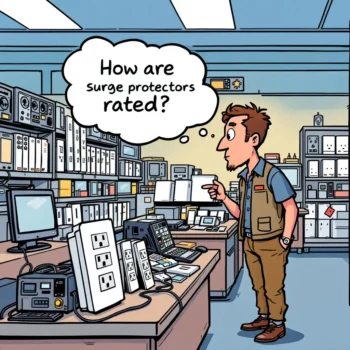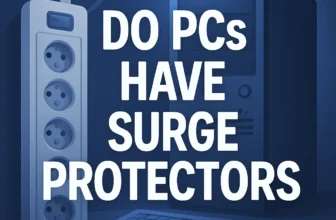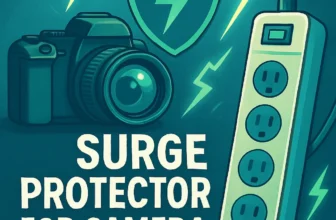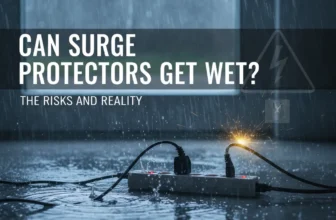Published By: Marc Edwards | Last updated on May 22, 2025 and reviewed by Editorial Team
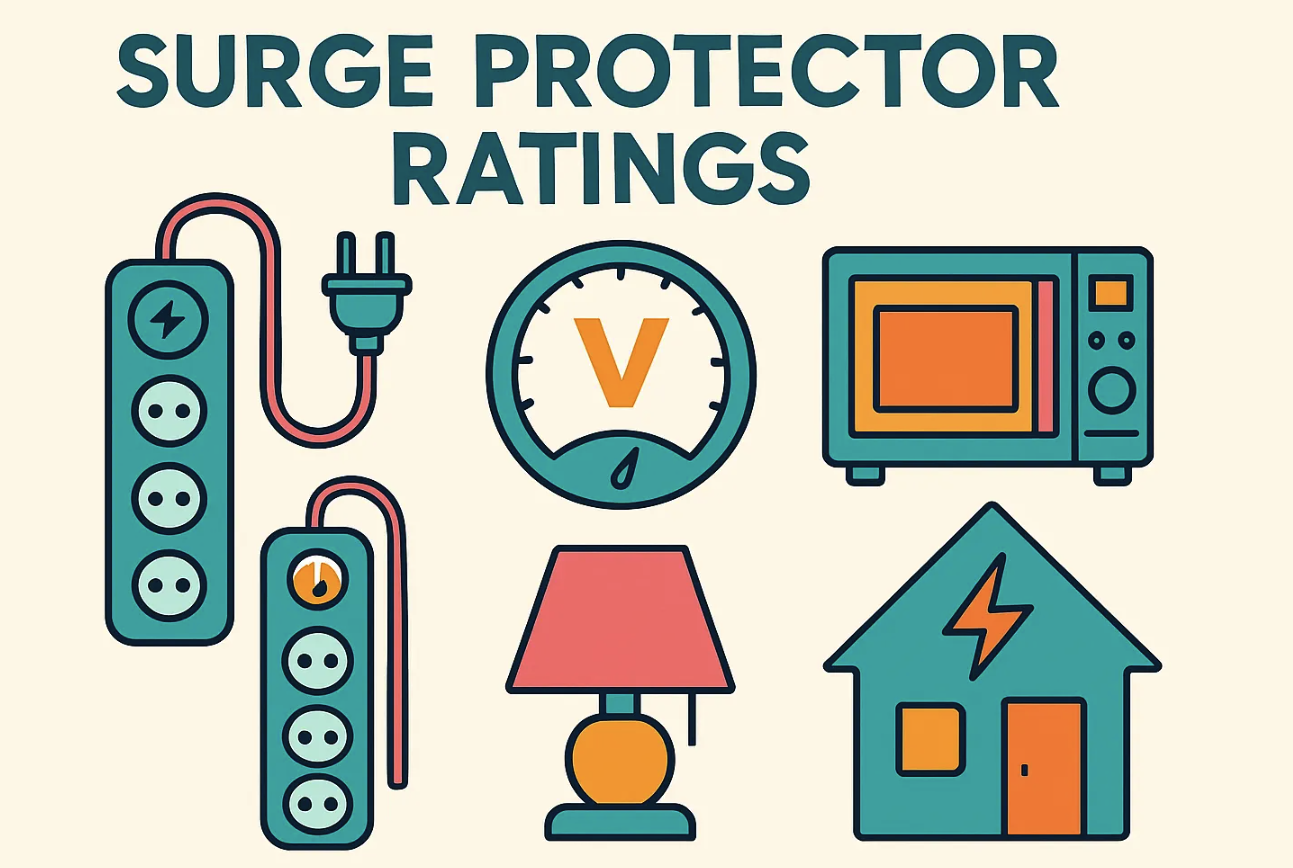
Have you ever experienced the frustration of a power surge damaging your valuable electronics? Power surges can wreak havoc on your devices, leading to costly repairs or replacements. Understanding surge protector ratings becomes crucial in safeguarding your electronics from these unexpected spikes.
Surge protectors act as a shield, absorbing excess energy and preventing it from reaching your devices. But how are surge protectors rated? This rating determines their effectiveness in providing surge protection. By choosing the right power strip with an appropriate rating, you ensure the longevity and safety of your electronics.
How Are Surge Protectors Rated?
Understanding how surge protectors are rated can significantly impact the safety and longevity of your electronics. When you invest in a power strip, you want to ensure it offers the best surge protection possible. But what exactly determines the effectiveness of these devices?
What You Need to Know
Surge protectors are primarily rated based on their joule rating. This rating indicates the amount of energy the device can absorb before it fails. Think of it as a shield that absorbs the impact of a power surge, protecting your valuable electronics from damage. The higher the joule rating, the more energy the surge protector can handle, providing better protection for your devices.
Here’s a quick guide to understanding joule ratings:
-
200-400 Joules: Suitable for basic protection, ideal for small appliances like lamps or clocks.
-
600-1000 Joules: Offers enhanced safety for sensitive electronics such as smartphones and tablets.
-
1000-2000 Joules: Recommended for computers, gaming consoles, and other high-end electronics.
-
2000+ Joules: Best for large appliances and home theater systems, ensuring maximum protection.
|
Joule Rating |
Suitable For |
Examples |
|---|---|---|
|
200-400 |
Basic Protection |
Lamps, Clocks |
|
600-1000 |
Sensitive Electronics |
Smartphones, Tablets |
|
1000-2000 |
High-End Electronics |
Computers, Gaming Consoles |
|
2000+ |
Large Appliances, Home Theaters |
Refrigerators, Home Theater Systems |
When selecting a power strip, consider the value and sensitivity of the equipment you plan to connect. A higher joule rating not only provides better protection but also extends the lifespan of the surge protector itself.
Importance of Surge Protector Ratings
Surge protector ratings play a vital role in determining the level of protection a surge protector can provide. When safeguarding your electronic devices from damaging power surges, understanding these ratings is essential to make an informed decision.
Several factors contribute to surge protector ratings, including the voltage rating, joule rating, and response time. Let’s take a closer look at each of these factors to understand their significance in ensuring effective surge protection.
Voltage Rating
The voltage rating of a surge protector indicates the maximum amount of voltage it can withstand before it fails to provide protection. Surge protectors are typically rated for either 120 volts or 240 volts, depending on the electrical system they are designed for.
Choosing a surge protector with the appropriate voltage rating for your specific needs is crucial to ensure optimal device performance and protection.
Joule Rating
The joule rating of a surge protector measures its ability to absorb and dissipate electrical energy from power surges. A higher joule rating indicates that the surge protector can handle larger surges without damage.
When selecting a surge protector, choosing one with a higher joule rating is recommended to ensure durability and long-lasting protection for your electronics.
Response Time
The response time of a surge protector refers to the speed at which it reacts to a power surge. A lower response time means that the surge protector can quickly detect and divert the excess voltage, minimizing the risk of damage to your devices.
Surge protectors with faster response times offer more effective protection against surges, making them an important factor to consider.
Once you understand surge protector ratings and evaluate these key factors, you can confidently choose a surge protector that meets your specific needs. Remember, a surge protector with higher voltage and joule ratings, along with a lower response time, can provide optimal protection for your valuable electronics.
Understanding Joules Rating
Have you ever wondered why some power strips offer better protection than others? The secret lies in the joules rating. This rating is an important factor in determining how well a surge protector can shield your electronics from unexpected power surges.
Let’s get into the scientific facts and common concerns surrounding this essential aspect of surge protection.
Scientific Facts
The joules rating of a surge protector indicates its capacity to absorb excess energy during a power surge. Think of it as a sponge that soaks up unwanted voltage, preventing it from reaching your valuable devices. A higher joule rating means the surge protector can handle more energy, offering superior protection.
Scientific Research Findings:
-
Higher Joule Ratings Provide Better Protection: Studies consistently show that surge protectors with higher joules ratings offer enhanced safety for your electronics. For instance, a surge protector rated at 1,000 joules will last longer and provide better protection than one rated at 500 joules.
-
Optimal Ratings for Different Devices: For high-end electronics, such as computers and home theater systems, I would recommend surge protectors with joules ratings of at least 2,000. This ensures optimal protection and longevity for your devices.
Here’s a quick reference table to help you understand the recommended joule ratings for various devices:
|
Device Type |
Recommended Joules Rating |
|---|---|
|
Basic Electronics |
200-400 |
|
Sensitive Electronics |
600-1000 |
|
High-End Electronics |
1000-2000 |
|
Large Appliances |
2000+ |
Common Concerns
You might wonder if a higher joule rating is always necessary. While it’s true that higher ratings offer better protection, the level of protection you need depends on the value and sensitivity of your devices. For basic electronics, a lower joule rating might suffice. However, investing in a surge protector with a higher joule rating is wise for expensive or sensitive equipment.
Another common concern is the lifespan of surge protectors. Over time, the joules rating decreases as the device absorbs multiple surges. Regularly check your power strip’s status and consider replacing it if it shows signs of wear. This proactive approach ensures continuous protection for your electronics.
How to Calculate Surge Protection Joules
Have you ever wondered how to determine the right level of surge protection for your electronics? Calculating surge protection joules is a crucial step in ensuring your devices remain safe from unexpected power surges.
Let’s explore a straightforward method to calculate the joules needed for your power strip with surge protection.
Step-by-Step Guide
-
Identify Your Devices: Start by listing all the electronic devices you plan to connect to the power strip. Consider their value and sensitivity. For instance, a computer or gaming console requires more protection than a simple lamp.
-
Check Device Wattage: Look at the wattage rating of each device. This information is usually found on the device itself or in the user manual. Knowing the wattage helps in estimating the energy needs.
-
Calculate Total Wattage: Add up the wattage of all devices you plan to connect. This total gives you an idea of the energy demand on the power strip.
-
Determine Joules Needed: Use the total wattage to estimate the joules rating required. A general rule is to multiply the total wattage by a factor of 2 to 3. This multiplication accounts for potential surges and ensures adequate protection.
-
Select the Right Power Strip: Choose a power strip with a joule rating that meets or exceeds your calculated requirement. For example, if your total wattage is 500, aim for a surge protector with at least 1,000 to 1,500 joules.
|
Device Type |
Example Devices |
Recommended Joules Rating |
|---|---|---|
|
Basic Electronics |
Lamps, Clocks |
200-400 |
|
Sensitive Electronics |
Smartphones, Tablets |
600-1000 |
|
Computing Appliances |
High-End Electronics |
Computers, Consoles |
|
Large Appliances |
Refrigerators, Theaters |
2000+ |
Common Mistakes to Avoid
A frequent mistake when selecting a power strip is underestimating the joules rating needed. Many people choose a surge protector based solely on price, overlooking the importance of adequate surge protection. This oversight can lead to insufficient protection, leaving your devices vulnerable to damage.
Another common error is not considering the cumulative effect of multiple devices. Each device adds to the overall energy demand, so it’s essential to account for all connected electronics.
Failing to do so might result in a power strip that cannot handle a significant surge, compromising your electronics’ safety.
19 By understanding how to calculate surge protection joules, you empower yourself to make informed decisions. This knowledge ensures that your valuable electronics receive the protection they deserve, extending their lifespan and maintaining their performance.
Consider products like the Siemens FS100 for enhanced protection.
Choosing the Right Surge Protector
Have you ever felt overwhelmed by the sheer number of power strips available on the market? Selecting the best surge protector for your needs can seem daunting, but understanding a few key factors can simplify the process. As someone who values their electronics, you want to ensure they receive the best protection possible.
Let’s explore some guidelines on choosing the right surge protector for different appliances and identify those with good ratings.
Guidelines for Different Appliances
When choosing a surge protector, consider the type of appliances you plan to connect. Different devices require varying levels of surge protection based on their value and sensitivity. Here’s a simple guide to help you make informed decisions:
-
Basic Electronics: A power strip with a joule rating of 200-400 is sufficient for devices like lamps and clocks. These appliances don’t require extensive protection, so a basic surge protector will do the job.
-
Sensitive Electronics: Smartphones, tablets, and other sensitive gadgets need more protection. Opt for power strips with a joule rating between 600-1000. This range ensures that your devices remain safe from unexpected power surges.
-
High-End Electronics: Computers and gaming consoles demand robust protection. Choose a surge protector with a joule rating of 1000-2000. This level of protection guards against significant surges, preserving your valuable electronics.
-
Large Appliances: For refrigerators and home theater systems, select a power strip with a joule rating of 2000 or more. These appliances require maximum protection due to their high energy consumption and sensitivity.
|
Appliance Type |
Example Devices |
Recommended Joules Rating |
|---|---|---|
|
Basic Electronics |
Lamps, Clocks |
200-400 |
|
Sensitive Electronics |
Smartphones, Tablets |
600-1000 |
|
High-End Electronics |
Computers, Consoles |
1000-2000 |
|
Large Appliances |
Refrigerators, Theaters |
2000+ |
Surge Protectors with Good Ratings
Finding the best surge protector involves looking beyond just the joule rating. Consider additional features that enhance functionality and reliability. Here are some characteristics of surge protectors with good ratings:
-
Indicator Lights: These lights inform you about the status of the surge protection. They alert you when the device is no longer providing adequate protection, ensuring you replace it in time.
-
Reset Buttons: A reset button allows you to restore the surge protector after it has absorbed a surge. This feature extends the lifespan of the power strip, offering continued protection.
-
Suppressed Voltage Rating: Lower suppressed voltage ratings provide better protection. Look for surge protectors with a suppressed voltage rating of 330 volts or less for optimal safety.
-
Clamping Voltage: This specification indicates the voltage level at which the surge protector will start diverting excess voltage. A lower clamping voltage means better protection for your devices.
It is important to understand that the best surge protector is one that aligns with your specific requirements, ensuring your electronics remain safe and operational.
When to Upgrade Your Surge Protector
Have you ever wondered if your power strip is still providing the necessary surge protection for your valuable electronics? Many people overlook the importance of regularly assessing their surge protectors, which can lead to unexpected failures and costly damages.
Knowing when to upgrade your surge protector ensures that your devices remain safe from power surges.
Signs of Wear and Tear
Surge protectors, like any other electronic device, have a lifespan. Over time, they can wear out and lose their effectiveness. Here are some signs that indicate it’s time to consider an upgrade:
-
Frequent Power Surges: If your area experiences frequent power surges, your power strip might have absorbed multiple hits. This can reduce its capacity to protect your devices.
-
Indicator Light Issues: Most surge protectors come with an indicator light showing whether the device still provides surge protection. If this light is off or flickering, it might be a sign that the surge protector is no longer effective.
-
Physical Damage: Check for any visible damage, such as cracks or burn marks. These can indicate that the power strip has taken a significant surge and may not offer adequate protection anymore.
-
Age of the Surge Protector: Surge protectors generally last two to three years. If yours is older, it might be time to replace it, even if it appears to function well.
|
Sign of Wear and Tear |
Description |
|---|---|
|
Frequent Power Surges |
Multiple surges reduce effectiveness |
|
Indicator Light Issues |
Light off or flickering indicates failure |
|
Physical Damage |
Cracks or burns suggest past surges |
|
Age |
Over 2 – 3 years old may need replacement |
Importance of Monitoring
Regular monitoring of your surge protectors is crucial for maintaining optimal surge protection. By keeping an eye on their condition, you ensure that your electronics remain shielded from unexpected power spikes. Here’s why monitoring is essential:
-
Prevents Device Damage: A worn-out surge protector might fail during a power surge, leaving your devices vulnerable. Regular checks help prevent such scenarios.
-
Ensures Continuous Protection: Monitoring allows you to replace your power strip before it completely loses its protective capabilities, ensuring continuous safety for your electronics.
-
Cost-Effective: Replacing a surge protector is far less expensive than repairing or replacing damaged electronics. Regular monitoring helps you avoid these costly repairs.
-
Peace of Mind: Knowing that your surge protectors are in good condition provides peace of mind, allowing you to focus on other important tasks without worrying about potential power surges.
Such proactive approach ensures that your valuable electronics remain safe and operational, providing you with peace of mind and long-term savings.
What Else to Know About Surge Protectors
Surge protection devices act as a barrier against unexpected power surges, ensuring your devices continue to function smoothly. But there’s more to these devices than meets the eye. Understanding additional features and maintenance tips can enhance their effectiveness and longevity.
Additional Features to Consider
Choosing the right power strip involves more than just looking at the joule rating. Here are some additional features that can make a significant difference:
-
USB Ports: Many modern power strips come with built-in USB ports. These allow you to charge your devices directly without needing an adapter, saving space and reducing clutter.
-
Smart Technology: Some surge protectors offer smart technology, allowing you to control them remotely via a smartphone app. This feature is particularly useful for managing energy consumption and ensuring devices are turned off when not in use.
-
Noise Filtering: High-quality surge protectors often include noise filtering capabilities. This feature reduces electromagnetic interference, ensuring your devices receive clean power, which can improve their performance and lifespan.
-
Automatic Shutdown: This feature automatically cuts off power to connected devices once the surge protector’s capacity is exceeded. It prevents overheating and potential damage to your electronics.
|
Feature |
Benefit |
Example Use Case |
|---|---|---|
|
USB Ports |
Charge devices without adapters |
Smartphones, Tablets |
|
Smart Technology |
Remote control and energy management |
Home Automation |
|
Noise Filtering |
Reduces electromagnetic interference |
Audio Equipment, Computers |
|
Automatic Shutdown |
Prevents overheating and device damage |
High-End Electronics, Appliances |
Maintenance Tips
Maintaining your surge protectors ensures they continue to provide optimal protection. Here are some practical tips:
-
Regular Inspection: Check your power strip regularly for any signs of wear or damage. Look for frayed cords, burn marks, or loose connections. These can indicate that the surge protector has absorbed a significant surge and may need replacement.
-
Test Indicator Lights: Ensure the indicator lights on your surge protector are functioning. These lights show whether the device is still providing surge protection. If the light is off, consider replacing the power strip.
-
Avoid Overloading: Connect only the necessary devices to your power strip. Overloading can reduce its effectiveness and increase the risk of overheating. Always check the total wattage of connected devices to ensure it doesn’t exceed the power strip’s capacity.
-
Replace Every Few Years: Surge protectors have a limited lifespan. Even if they appear to be working, their ability to absorb surges diminishes over time. Replace them every two to three years to ensure continuous protection.
Understanding surge protector ratings is essential for safeguarding your electronics. By selecting the right power strip, you protect your devices from unexpected power surges and extend their lifespan. Regularly check your surge protectors for signs of wear and upgrade them as needed.
Remember, a well-chosen power strip not only provides peace of mind but also saves you from costly repairs or replacements. Keep your electronics protected and enjoy uninterrupted performance.

